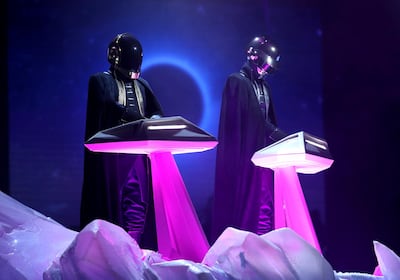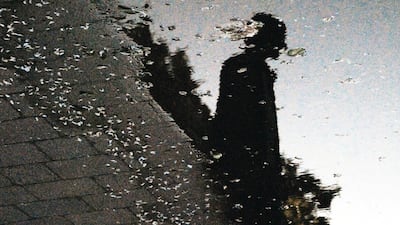The release on Friday of Tunes 2011-2019, which compiles singles and EPs by British dubstep pioneer Burial, will cap an extraordinary decade by one of music's more extraordinary artists.
Tracks such as Street Halo and Subtemple are recognisably Burial – trademark hisses and crackles, tick-tock snares, edited snatches of whispered speech and soaring vocals, all swathed in melancholy synth ambience. Expanding this basic palate are more ambitious songs such as Truant, Rough Sleeper and Ashtray Wasp, which add drama, melodic dynamics and bursts of rhythmic abandon.
In other respects, it is difficult to propose anything as "recognisably Burial" without pause. As his name suggests, Burial has become a global cult star by hiding his light. Early records, on London's hyper-hip Hyperdub label, were released without any fanfare: no image of the artist, no interviews, no concerts, no public appearances, no biography whatsoever. This secrecy apparently extended into Burial's personal life. "Only about five people outside of my family know I make tunes, I think. I hope," he revealed in a rare interview.
He hoped in vain. Burial's mystique began to grow, firstly among electronic music aficionados, then more broadly after his second album Untrue was greeted like electronic music's second coming. By the time he was shortlisted for 2008's Mercury Music Prize, speculation about Burial's identity overshadowed the nominations of mega-stars such as Adele, Robert Plant and Radiohead. The prime suspects included a host of established pseudonyms such as Aphex Twin (or Richard James), Fatboy Slim (Norman Cook) and Four Tet (Kieran Hebden).
All that gossip, which assumed Burial must be famous, missed the point entirely. In 2008, The Independent revealed the artist's true identity to be Londoner William Bevan, who confirmed his "Clark Kent" identity, posted an image of himself online, thanked his fans and promptly retreated once more. "It's just the way I am," he said. "I want to be in the dark at the back of a club."
Why many celebrities actively shun the spotlight
Burial is not the only artistic hermit thrust towards the limelight in recent months. Various stories have circulated about Banksy, the art world's most elusive star. The graffiti artist's former agent, Steve Lazarides, published images showing Banksy at work, albeit without revealing his face. Sotheby's included a similarly tantalising portrait, of the back of a hooded top, in an auction of works by British photographer Chris Levine.
What Burial and Banksy prove is that evading celebrity is no bar to becoming the centre of global attention. Their respective desire for privacy is also linked by shared cultural roots. Anonymity is the raison d'etre of graffiti artists like Banksy, whose work could easily lead to the artist's arrest. Banksy's stencils, spray-painted on buildings without permission, might be art for some, but for others it is vandalism. Graffiti artists are curiously audacious and covert as a result. Signing their works with pseudonymous tags, they simultaneously shout their authorship from the rooftops and protect their identities.
Burial's rejection of the limelight owes much to the UK's rave scene that, like punk and hip-hop, enjoys close association with graffiti. One of Banksy's spray-painting heroes is 3D, who in his more famous incarnation as founder of Massive Attack has also worked with Burial.
Fear of prosecution may also explain why DJs at early raves hid their faces, such as the hazmat-suited Altern-8. But anonymity fused politics, erasing rock music's traditional hierarchy elevating artist above audience, and aesthetics: the music was everything, unmediated by the personality of subsequent superstar DJs such as Skrillex.
One ironic, if understandable, consequence of this ego erosion is its appeal to famous people. Brad Pitt paid tribute to Banksy by saying: "He does all this and he stays anonymous. I think that's great. These days everyone is trying to be famous."
Letting the work speak for itself
Electronic music’s cult of de-personality was a primary attraction for Radiohead’s Thom Yorke. Not only were artists such as Aphex Twin and Autechre the antithesis of rock music bombast, their music provided a means of defacing Radiohead’s signature sound, including Yorke’s own vocals.
For novelist Nick Hornby, the resulting Radiohead album, Kid A, lacked character. "The album is morbid proof that this sort of self-indulgence results in a weird kind of anonymity rather than something distinctive and original," he said in the New Yorker. This same sniffiness would have been music to Yorke's ears.

Almost any artist who rejects publicity invites immediate suspicion, not least from the public. "I'd rather not talk about myself as a person and let the music speak for itself,' says Aaron Jerome, aka the mask-wearing musician SBTRKT, speaking somewhat paradoxically about himself.
This cynicism is not without justification, above all the ways that willed obscurity has become a highly effective marketing tool. You wouldn't know Guy-Manuel de Homem-Christo and Thomas Bangalter were internationally famous unless they donned the futuristic helmets they wear as Daft Punk. Masks of different sorts have been adopted by Damon Albarn's cartoon alter egos Gorillaz, RnB's singer-in-sunglasses Gabriella Wilson, better known as HER, and EDM superstar Steven Zhu, whose career took off after he capitalised on his own low profile.
Who is Abul Mogard?
Few contemporary musicians inhabit the grey area between song and singer with more spectral grace than Abul Mogard, another mystery artist enjoying a successful year. If the name doesn't ring any bells, that is probably because Mogard's avant-garde drones exist on mainstream music's outermost edges. Kimberlin, his soundtrack for Duncan Whitely's experimental film of the same name, creates desolate swells of noise using a modular synthesiser and Farfisa organ. On first acquaintance, these can approximate to a vacuum cleaner preparing for take-off inside your brain.

As well as making some of the decade's most entrancing music, Mogard has created one of its more enchanting myths. He is, so the story goes, a retired Serbian metal worker who began experimenting with synthesisers because he missed "the clunk, clatter and rhythm of the sounds that punctuated his day".
Accompanying this biography on website Bandcamp is an image of a balding man doing a fair impersonation of a retired Serbian metalworker. It has been revealed as a fiction (probably), but not before "Mogard" gave several interviews in character and journalist Alec Hillyer wrote a gushing and seemingly sincere appreciation of the man under the headline "The Calloused Hands of Abul Mogard".
Speculation is already rife on obscure music chat rooms about Mogard's "true" identity. While this is sometimes decried as an invasion of privacy – see the regular attempts to unmask the famously slippery novelists Thomas Pynchon and Elena Ferrante – it is also inevitable: curiosity is perhaps the flipside of obfuscation.
Why do we care so much about true identities?
Aside from raising ethical concerns, these investigations also ask: how much do fans really need to know about the artists they love? How much candour do artists owe their audience? Does it matter, in either case, if the answer is nothing or even a fiction?
In the decade since Burial was disinterred, so to speak, his capacity to fascinate people has only deepened. This is partly because his reticence now seems like a sign of personal integrity and creative commitment. He was also not so enamoured with his own mystique that he couldn't post an occasional image or offer the odd interview.
The mystery surrounding Burial now seems subordinate to the intimate intensity of the music itself, much as Banksy’s outlaw persona chimes with his outsider art or Mogard’s (forged) CV reflects his dehumanised industrial thrums.
In 2011, scene-setting DJ Mary Anne Hobbs played Burial's collaboration with Massive Attack for the first time, before commenting on Burial's self-imposed isolation. "I think it's his solitude that contributes to his purity, his innocence, his great beauty," she said.
Burial himself once expressed a similar thought, albeit in less melodramatic terms. "It's like the lost art of keeping a secret, but it keeps my tunes closer to me and other people."



